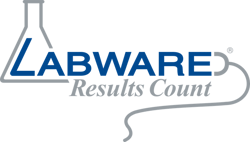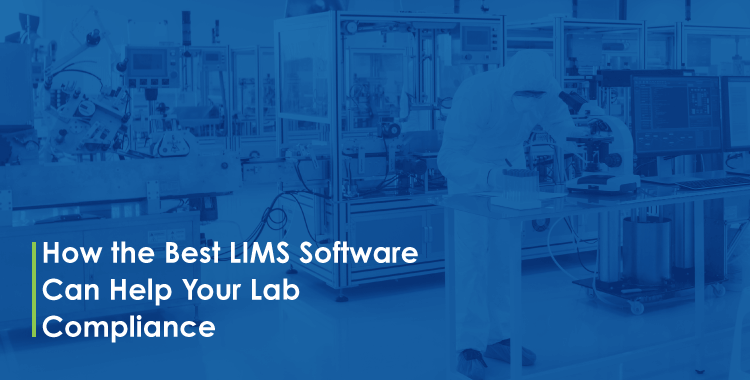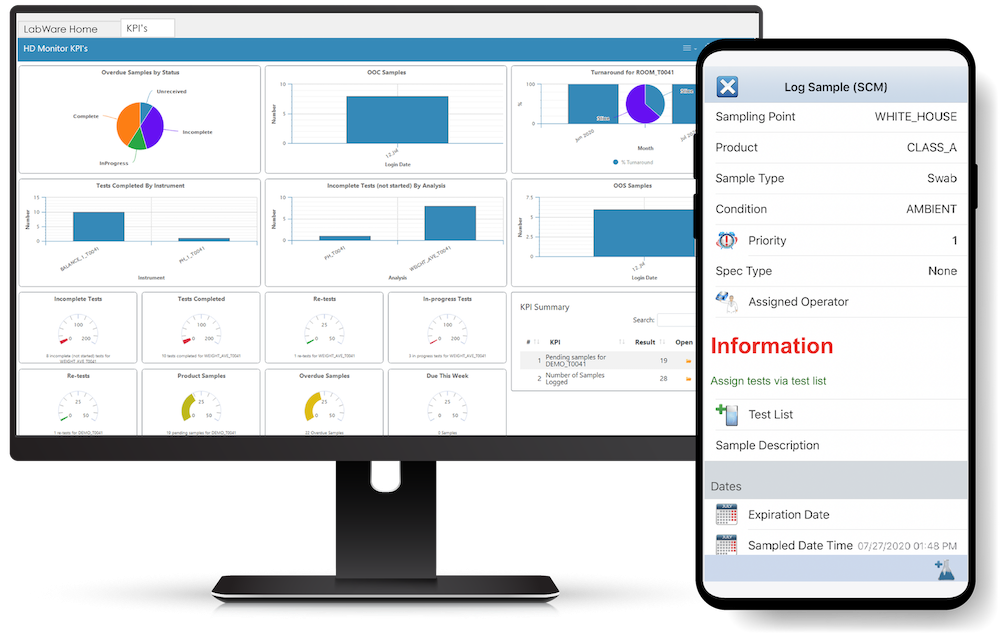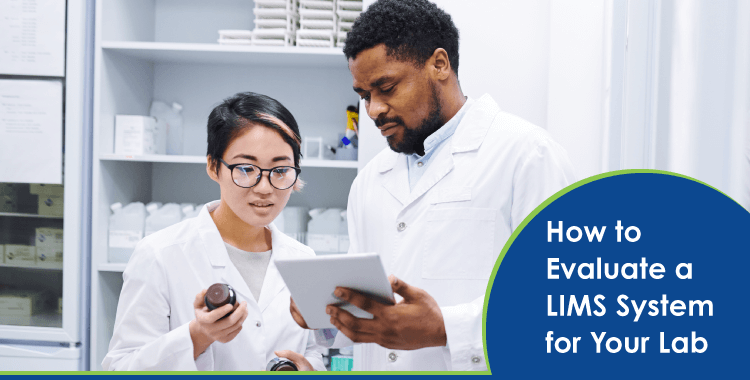
The LIMS evaluation process is a key factor in achieving success, and this guide will provide invaluable guidance to ensure the right decisions are made. This guide will take you through the whole process of selecting a proper LIMS, while providing helpful advice to help choose the most appropriate provider.
We'll begin by exploring the importance of LIMS and how it can revolutionize your laboratory operations. Next, we'll discuss identifying your lab's specific requirements such as sample volume management, types of analyses performed, regulatory compliance needs, integration capabilities, and customization options.
As you progress through this blog post, you'll learn about researching reliable LIMS vendors by examining their reputation and industry-specific experience. We will also delve into evaluating license vs subscription-based pricing models to determine which best suits your organization's budgetary constraints.
In addition to these considerations, we will assess ongoing support needs like training resources, software updates and maintenance as well as regulatory compliance support. Furthermore, our guide will compare various LIMS features and functionality including ease of use, scalability, data security measures, reporting capabilities,automation options - all vital components in determining the most suitable solution for your laboratory.
Understanding the Importance of LIMS
Laboratory Information Management Systems (LIMS) play a crucial role in improving lab workflows and compliance by streamlining processes, tracking data, and increasing overall efficiency. By replacing manual or outdated systems with a modern LIMS solution, labs can benefit from greater transparency, accuracy, and built-in quality control measures and assurance.
Streamlined Processes
A well designed LIMS automates routine tasks such as sample registration, result entry, and report generation. This not only saves time but also reduces human error that may occur during manual data handling. With an efficient system in place to manage laboratory processes end to end, your team can focus on more critical tasks while ensuring consistent results.
Data Tracking and Traceability
- Sample Tracking: A LIMS allows for easy tracking of samples throughout their lifecycle within the lab from receipt to disposal. This ensures accurate record keeping for regulatory compliance purposes.
- Data Integrity: The use of electronic records instead of paper-based documentation helps maintain data integrity by preventing unauthorized alterations or loss due to mishandling.
- Audit Trails: Comprehensive audit trails are essential for demonstrating adherence to industry standards like FDA's 21 CFR Part 11 or ISO/IEC 17025 guidelines. A robust LIMS will automatically log all actions performed within the system along with user details and timestamps.
Built-In Quality Control Measures and Assurance
The right LIMS solution provides built-in quality control features that help ensure high quality results while minimizing errors. These include automated checks against predefined acceptance criteria during sample analysis, flagging of out of specification results for further investigation, and real-time monitoring of instrument performance to detect potential issues before they impact data quality.
Improved Compliance Management
Maintaining compliance with industry regulations can be a daunting task, especially when dealing with manual or outdated systems. A LIMS solution simplifies this process by automating the generation of necessary documentation(Certificates of Analysis (CoA) or Material Safety Data Sheets (MSDS)) while also providing tools for managing regulatory audits more effectively.
In today's competitive landscape, labs need to operate at peak efficiency while maintaining strict adherence to regulatory requirements. Having a LIMS solution in place is necessary in achieving peak lab efficiency while adhering to industry regulations. Maintaining this understanding aids in making knowledgeable decisions when it comes to investing in an enduring system and scoping out its future enhancements or functionality.
An appreciation ofthe importance of LIMS is essential for a successful laboratory operation. By identifying your lab's specific requirements, you can ensure that the system chosen meets all necessary criteria and provides an efficient workflow.
Key Takeaway: A well-designed LIMS can streamline lab workflows and compliance, automate routine tasks, and provide data tracking and traceability. It also offers built-in quality control measures for high quality results while minimizing errors, simplifies regulatory compliance management by automating documentation generation, and provides tools for managing audits more effectively. Understanding the importance of LIMS in achieving these goals is crucial for labs to operate at peak efficiency while maintaining strict adherence to regulations.
Identifying Your Lab's Specific Requirements
Before evaluating different LIMS solutions for your lab, it is crucial to identify your specific requirements. This will help you find a system that best fits the unique needs of your laboratory and ensures seamless integration with existing processes. Consider factors such as sample volume, types of analyses performed in the lab, regulatory compliance needs (e.g., FDA or ISO), integration with existing equipment or software platforms, and customization options that cater to unique laboratory procedures.
Efficient Sample Volume Management
When choosing a LIMS solution, it is essential to consider its ability to manage varying sample volumes efficiently. Depending on the size of your lab and the number of samples processed daily, you need a system capable of handling high throughput without compromising accuracy or data integrity. It is key to assess how well potential LIMS can scale up or down according to fluctuations in sample volume.
Types of Analyses Performed
Different laboratories perform various types of analyses depending on their industry focus and research goals. Ensure that any prospective LIMS solution supports all analytical methods used within your facility, from routine tests like pH measurements to more specialized techniques such as mass spectrometry.
Regulatory Compliance Needs
Laboratories operating under strict regulatory environments must ensure their chosen LIMS adheres to relevant guidelines like FDA 21 CFR Part 11, ISO standards, or other industry-specific regulations. A compliant LIMS should provide features such as audit trails, electronic signatures, and secure data storage to help your lab maintain regulatory compliance.
Integration Capabilities
A LIMS solution should easily integrate with existing laboratory equipment and software platforms. This ensures a smooth transition from manual or outdated systems to the new LIMS while minimizing disruptions in workflow. Evaluate how well potential solutions can interface with current instruments like spectrophotometers or chromatography systems, as well as any third-party software used for data analysis or reporting purposes.
Customization Options
No two laboratories are exactly alike; therefore, it is crucial that your chosen LIMS offers customization options tailored to your unique processes and procedures. Look for vendors who provide flexible configuration settings and customizable workflows so you can adapt the system according to your specific needs without compromising efficiency or accuracy.
Identifying your laboratory's exact requirements is essential for guaranteeing that you select a LIMS which satisfies all of them. Now it is time to research reliable LIMS vendors who have experience in the industry and a good reputation.
Key Takeaway: Before evaluating LIMS solutions, identify your lab's specific requirements such as sample volume, types of analyses performed, regulatory compliance needs, integration capabilities and customization options. Consider the ability to manage varying sample volumes efficiently and ensure that any prospective LIMS solution supports all analytical methods used within your facility while adhering to relevant guidelines for regulatory compliance.
Researching Reliable LIMS Vendors
Discovering the ideal LIMS provider is essential for guaranteeing your lab's prosperity. With so many potential vendors, determining which one can provide the necessary services and features for your lab's success can be a daunting task. When selecting a LIMS partner, focus on their reputation and industry-specific expertise to ensure the best fit for your lab.
Vendor Reputation
A reliable LIMS vendor should have a proven track record of delivering high-quality solutions that stand the test of time. Research areas like customer reviews, awards or industry recognition, and the length of time in business to assess a LIMS vendor's reliability as longevity often indicates stability and expertise within the field.
To get started, explore some reputable sources such as Gartner Peer Insights, Capterra, or SelectHub. These platforms provide user-generated reviews and ratings that can give you valuable insights into each vendor's performance from real-world users like yourself.
Industry-Specific Experience
In addition to general reliability, it's essential to choose a LIMS provider with experience implementing their system within laboratories similar to yours in terms of size and industry focus. This ensures they understand the unique challenges faced by labs like yours and are equipped with specialized knowledge needed for successful implementation.
- Pharmaceutical: If your lab operates within the pharmaceutical sector, look for vendors experienced in meeting FDA regulations and Good Manufacturing Practices (GMP).
- Environmental: Environmental labs require LIMS solutions that can handle complex sample matrices, manage regulatory reporting requirements, and integrate with specialized analytical instruments.
- Clinical: Clinical laboratories need a LIMS provider well-versed in managing patient data confidentiality, complying with HIPAA regulations, and integrating with Electronic Health Record (EHR) systems.
- Agriculture/Food & Beverage: Labs within the agriculture or food & beverage industries should seek vendors experienced in handling diverse sample types while adhering to strict quality control standards such as ISO/IEC 17025 or HACCP guidelines.
Taking the time to research reliable LIMS vendors is essential for finding the best solution for your lab. By focusing on vendor reputation and industry-specific experience, you'll be better equipped to make an informed decision that will ultimately lead to improved efficiency and compliance within your laboratory environment.
Researching reliable LIMS vendors is a critical step in ensuring the success of any project, as it ensures that you are working with an experienced and reputable vendor. Evaluating license vs subscription-based pricing models will help to determine which option best meets your budget needs while still providing quality services.
Key Takeaway: To ensure the success of your lab, it is crucial to research reliable LIMS vendors with a proven track record and industry-specific expertise. Look for user-generated reviews and ratings on platforms like Gartner Peer Insights or Capterra, and choose a provider experienced in implementing their system within laboratories similar to yours. By doing so, you'll be better equipped to make an informed decision that will ultimately lead to improved efficiency and compliance within your laboratory environment.
Evaluating License vs Subscription-based Pricing Models
One of the critical factors when choosing a LIMS vendor is determining whether they offer license fees or subscription-based pricing models. Each model has its advantages and drawbacks, so it's essential to understand how these options align with your lab's budgetary constraints and long term goals.
License Fees
A license fee model typically requires an upfront payment for perpetual access to the software. This option can be attractive if you prefer a one time investment that grants ownership of the system without ongoing payments. However, there are some potential downsides:
- Maintenance costs: You may need to pay additional fees for updates, bug fixes, and support services.
- Limited flexibility: If your laboratory grows or changes focus over time, upgrading or switching systems might require significant financial investments.
- No automatic updates: With this model, staying current with new features often involves purchasing upgrades separately from the initial license fee.
Subscription-Based Pricing
In contrast, a subscription-based pricing model usually involves recurring payments (monthly or annually) in exchange for continued access to the software and related services. The benefits include:
- Ongoing support: Subscriptions generally cover regular updates and maintenance as part of their service package.
- Budget-friendly scaling: Subscription pricing often allows for easy adjustments to accommodate changes in laboratory size or focus.
- Lower upfront costs: This model can be more accessible for labs with limited budgets, as it spreads the cost over time rather than requiring a large initial investment.
To make an informed decision between license fees and subscription-based pricing models, consider your lab's financial resources and future growth plans. Assess whether you prefer a one-time investment that grants ownership of the software or ongoing payments that include support services like updates and maintenance. Additionally, consider any extra charges that could be involved with either option (e.g., instruction, customizing).
In summary, carefully weighing the pros and cons of both licensing options will help ensure you select a LIMS solution that aligns with your lab's needs while providing long-term value. To further aid in this decision making process, consult resources such as LIMS selection guides, industry forums, and user reviews to gain insights from others who have faced similar choices.
It is important to thoroughly evaluate the license vs subscription-based pricing models before making a decision. Moving on, it is equally essential to assess ongoing support needs such as training resources, software updates and maintenance, and regulatory compliance support when selecting an LIMS system.
Key Takeaway: When evaluating a LIMS vendor, it's important to consider whether they offer license fees or subscription-based pricing models. License fees require an upfront payment for perpetual access but may come with maintenance costs and limited flexibility, while subscription-based pricing involves recurring payments that allow for ongoing support and budget-friendly scaling. Consider your lab's financial resources and future growth plans when making this decision.
Assessing Ongoing Support Needs
To ensure successful implementation and continued smooth operation after adopting a new LIMS solution into your workflow environment, it is crucial to consider the level and type of ongoing support needed throughout its lifecycle. This includes training resources available during initial setup as well as any future upgrades or updates required due to changes either internally at the organization level or externally, such as regulatory compliance requirements.
Training Resources
An effective LIMS vendor should provide comprehensive training resources for their system. Look for vendors offering training resources in various formats such as on-site sessions, webinars, video tutorials, user manuals and online help centers. When evaluating offerings in this area, look for those that cater to different learning styles and offer a wide range of material to accommodate staff preferences. Additionally, inquire about the availability of ongoing training opportunities for new employees or refresher courses for existing users.
Software Updates and Maintenance
Maintaining an up to date LIMS solution is essential not only for ensuring optimal performance but also for addressing potential security vulnerabilities. A reliable vendor will regularly release software updates with enhancements like bug fixes or improved functionality. As part of your evaluation process, ask prospective vendors about their upgrade path, how they notify customers of new releases, and what kind of assistance they provide during the update process.
Regulatory Compliance Support
Laboratories often need to adhere to strict regulations set by organizations like the FDA or ISO standards bodies. Therefore, selecting a LIMS vendor that offers regulatory compliance support is crucial. This may involve providing guidance on configuring the system to meet specific requirements, offering pre-built templates for regulatory reporting, or assisting with audits and inspections. Ensure that your chosen vendor has experience in navigating these regulations and can provide the necessary support when needed.
In addition to these primary ongoing support considerations, it's also important to evaluate vendors' responsiveness and availability for technical assistance. A dedicated customer service team should be accessible through multiple channels like phone, email, or live chat. Furthermore, consider whether they offer 24/7 support or have limitations based on business hours or time zones.
It is essential to assess ongoing support needs when evaluating a LIMS, such as training resources, software updates and maintenance, and regulatory compliance. The next step in the evaluation process focuses on features and functionality of the system, not limited to but including ease of use, scalability options for data security measures, reporting capabilities and automation possibilities.
Key Takeaway: When evaluating a LIMS solution, it is important to consider the ongoing support needed throughout its lifecycle. This includes training resources for initial setup and future upgrades, software updates and maintenance, regulatory compliance support, as well as vendor responsiveness and availability for technical assistance. Look for a company that offers comprehensive training resources in various formats and have experience navigating regulations set by organizations like the FDA or ISO standards bodies.
Comparing LIMS Features and Functionality
By assessing the features and functionality of various LIMS solutions in relation to your laboratory's needs, you can guarantee that the system chosen will not only satisfy your demands but also maximize efficiency. Doing so will ensure that the chosen LIMSwill not only meet your requirements but also enhance the user experience within the workflow.
Ease of Use
A user-friendly interface is crucial for a successful LIMS implementation. Look for systems with intuitive navigation and clear instructions that minimize the learning curve for users. Additionally, consider whether customizable dashboards are available to tailor the software according to individual preferences or job roles.
Scalability
Labs may grow or evolve over time making it important to choose a LIMS solution that can scale accordingly. Assess whether the system allows for easy expansion in terms of sample volume management, additional analysis types or integration with new equipment as needed.
Data Security Measures
The protection of sensitive data should be a top priority when selecting a LIMS vendor. Investigate what security measures are in place such as encryption methods used during data transmission/storage. It is also important to evaluate control mechanisms like role-based permissions which restrict unauthorized access within the organization's network infrastructure (source).
Reporting Capabilities
- Built-in reports: Ensure that there are built-in reporting templates for common laboratory tasks, such as sample tracking or inventory management.
- Custom reports: Assess whether LIMS allows users to create custom reports tailored to their specific needs and export them in various formats (e.g., PDF, Excel).
- Regulatory compliance: Verify that the system can generate regulatory compliant documentation if required by your industry standards like FDA or ISO (source).
Automation Options
LIMS solutions should offer automation options for routine tasks, which can save time and reduce human error. Look for features such as instant data collection from instruments, barcode scanning capabilities, and workflow tools that streamline processes within the lab environment.
Potential Integration with Other Laboratory Systems
An effective LIMS solution must integrate seamlessly with existing laboratory systems like electronic lab notebooks (ELNs), enterprise resource planning (ERP) software and other specialized applications used within the organization's infrastructure. Evaluate how easily a potential vendor's system will work alongside these platforms before making a decision.
Comparing LIMS features and functionality is a critical step in selecting the right system for your business. Now that we have identified key criteria to consider, let's explore how to conduct a thorough vendor evaluation process.
Key Takeaway: When evaluating LIMS solutions, it's important to compare features and functionality based on your lab's specific needs. Look for user-friendly interfaces with customizable dashboards, scalable systems that can grow with your lab, robust data security measures, built-in and custom reporting capabilities, automation options for routine tasks and potential integration with other laboratory systems.
Conducting a Thorough Vendor Evaluation Process
Selecting the best LIMS solution for your lab's unique requirements involves conducting a thorough evaluation process. This includes requesting product demonstrations, engaging stakeholders within your organization, and gathering feedback on system performance and usability during demo sessions. Additionally, consider asking for references from existing customers about their experiences working with the particular company and its products before making a final decision.
Request Product Demonstrations
The first step in evaluating potential LIMS vendors is to request product demonstrations. Take advantage of the product demonstrations to evaluate usability, scalability, data security measures, reporting capabilities, automation options for routine tasks and integration with other laboratory systems. During these sessions, take note of factors such as ease of use, scalability, data security measures, reporting capabilities, automation options for routine tasks, and the potential for integration with other laboratory systems.
Engage Stakeholders Within Your Organization
Involving key stakeholders from different departments within your organization can help ensure that all perspectives are considered when evaluating LIMS solutions. Encourage team members to participate actively in demo sessions by asking questions about features relevant to their roles or responsibilities. Gathering input from various sources will enable you to make a more informed decision based on diverse opinions and expertise.
Gather Feedback on System Performance and Usability
After attending product demonstrations from shortlisted vendors, gather feedback from attendees regarding system performance and usability during these sessions. Consider creating a standardized form or survey that participants can complete after each demonstration session so you can easily compare responses across multiple vendors' offerings.
Create Lists of Pros and Cons:
- Ease of use
- Scalability
- Data security measures
- Reporting capabilities
- Automation options for routine tasks as well as the potential for integration with other laboratory systems.
Ask for References from Existing Customers
Prior to making a final decision, it is essential to ask vendors for references from existing customers who have implemented their LIMS solution. Reach out to these customers to gain a deeper understanding of the solutions system performance as well as customer support observations and overall value in comparison with other software. This can provide valuable insights into how well each vendor's system performs in real world settings and whether they offer adequate support throughout implementation and beyond.
Taking these steps will help ensure that you select a LIMS solution that best meets your lab's unique requirements while providing long-term value through improved efficiency, data management, compliance adherence, and overall operational effectiveness.
Key Takeaway: To select the best LIMS solution for your lab, conduct a thorough vendor evaluation process by requesting product demonstrations, engaging stakeholders within your organization, and gathering feedback on system performance and usability. Additionally, create lists of pros and cons for each potential vendor and ask for references from existing customers before making a final decision.
FAQs in Relation to Lims Evaluation Process
The Four Steps in Implementing a LIMS
The implementation of a Laboratory Information Management System (LIMS) involves four main steps:
- Identifying your lab's specific requirements
- Researching reliable LIMS vendors
- Evaluating pricing models and features
- Conducting a thorough vendor evaluation process
Steps to Implementing a LIMS
The steps to implement a LIMS include:
- Understanding the importance of a LIMS
- Identifying your lab's requirements
- Researching vendors
- Evaluating pricing models and features
- Assessing ongoing support needs
- Comparing functionality across systems
- Conducting an extensive vendor evaluation process before making a final decision
What is LIMS Analysis?
LIMS analysis refers to the utilization of a Laboratory Information Management System to manage sample data throughout its lifecycle within laboratories. This includes sample tracking, workflow management, monitoring quality control processes, and reporting on results while ensuring traceability and compliance with regulatory standards.
How Does LIMS Ensure Traceability?
Laboratory Information Management Systems ensure traceability by maintaining comprehensive records of each sample's history from receipt through processing to final disposition. This includes information such as sample identification numbers or barcodes along with details about analyses performed. Additionally, they provide audit trails that track any changes made during testing procedures, which help maintain regulatory compliance.
Conclusion
Overall, evaluating and selecting the right LIMS for your lab is an important process that requires careful consideration of specific requirements, reliable vendors, pricing models, ongoing support needs, features, and functionality. By understanding the necessity of LIMS and conducting a thorough evaluation process, you can ensure that your lab has the tools it needs to operate efficiently while meeting regulatory compliance standards.
If you're ready to start your LIMS evaluation process or need more information on how LabWare can help streamline your laboratory operations with our industry-leading solutions, contact us today.
